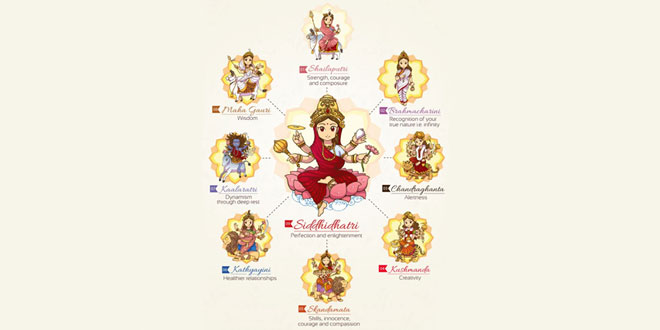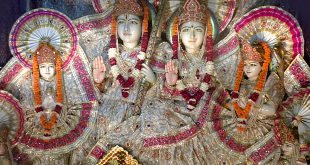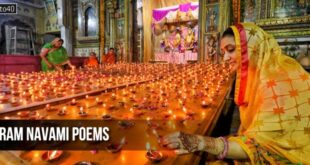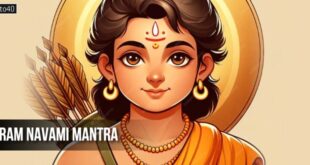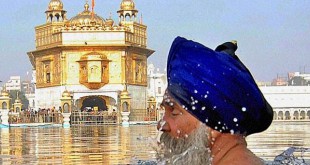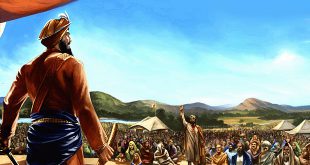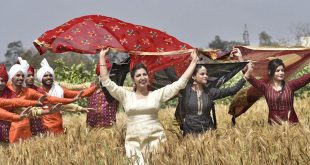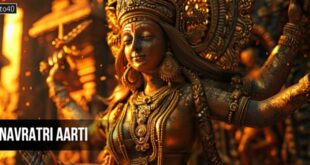Different Forms of Durga: The festival of
Durga Puja is celebrated with religious observance by the Bengalis all over the world. During the festive season especially in
India, the nine forms of Goddess Durga are worshiped on the nine days, each symbolizing a religious significance. Named differently, each form of the deity had different goals, when they assumed their avatars. Worshiping the nine
different forms of Durga is considered auspicious, because the deity brings the qualities of power, wisdom and courage to her devotees.
In this article, we have given comprehensive information on the different forms of Durga.
Nine Different Forms of Durga
- Shailputri: The first form of Goddess Durga is referred to as Shailputri or the Daughter of Mountain. She is a daughter of Himalayas. In the previous birth, she was born as Sati-Bhavani, the daughter of Daksha. She had married Lord Shiva, without her father’s consent. One fine day, Daksha organized a Yagna, wherein he didn’t invite Lord Shiva. Since Sati was obstinate, she went to her father’s place and attended the Yagna. Thereupon, Daksha insulted Lord Shiva. Humiliated and angered by her father, because he insulted her husband, Sati burnt herself in the fire of the Yagna.
- Brahmacharini: The second form of Goddess Durga is called ‘Brahmacharini’. Her name is derived from the word ‘Brahma’, which means ‘Tapa’ or penace. Brahmacharini is gorgeous and has a good conduct. She holder a rosary in her right hand, while Kamandal in her left hand. Full of merriment, Brahmacharini is worshiped on the second day of Durga Puja. A famous story is associated with Brahmacharini. According to the legend, she was born as Parvati Hemavati, the daughter of Himvan. One fine day, when Parvati was playing with her friends, sage Narada approached her. Sage Narada told that she would marry her husband from her previous birth on a condition that she would have to observe penance. After hearing this, she decided that she would tie the wedding knot with none other than Shambhu (Lord Shiva), her husband in the previous birth. After saying this, she went to observe penance. This is the reason, why she is referred as Tapacharini or Brahmnacharini. From that time, she also came to be known as Uma.
- Chandraghanta: The third form of Goddess Durga, referred to as Chandraghanta, represents bravery. The charming, bright Chandraghanta looks gorgeous. She has a half-circular moon in her forehead, hence the name ‘Chandraghanta’. With three eyes, she is golden in color. Ten types of weapons, including sword and arrows are held by her ten hands. Seated on a lion, she is always ready to go to war. The unprecedented bravery of Chandraghanta is worshiped on the third day of Durga Puja.
- Kushmanda: Kushmanda, the fourth form of Goddess Durga, resides in solar systems. It is believed that Kushmanda is the creator of the entire Universe. According to the legends, she created the Universe by merely laughing. She hands eight hands out of which, seven hold weapons and the eight one bears a string of beads. With rosary in her right hand, she sits on Lion. The deity is worshiped on the fourth day of Durga Pooja.
- Skanda Mata: In her fifth form, Goddess Durga is known as ‘Skanda Mata’. After observing penance, Goddess Parvati tied the wedding knot with Lord Shiva. Their son is Skanda, the leader of the army of Gods. Therefore, the fourth form of Goddess Durga is referred to as Skanda Mata, the Mother of Skanda. The deity of fire – Skanda Mata – is white in color, has three eyes and four hand. She is seated on a lion, with her son (Skanda), on her lap.
- Katyayani: Katyayani is the sixth form of Goddess Durga. As per the legends, Rishi Katyayan was born in his ‘Katya’ lineage. He observed penance, because he wanted to get paramba as his daughter. Pleased with her prayers, Goddess Durga blessed him and took birth as his daughter. The daughter was then named as ‘Katyayani’. Seated on her vehicle lion, Katyayani has three eyes and four hands.
- Kalratri: The seventh form of Goddess Durga is popularly known as ‘Kalratri’. As the name suggests, Kalrati is as black as a dark night. With bountiful unlocked hair, Kalratri wears necklaces that shine like lightening. She is personified as the deity of power, with large eyes and fire that is breathed by her. Kalratri is also referred to as Shubhamkari, as she makes her devotees fearless. She has four hands, with a sharp sword in her left hand and a burning torch in her lower left hand, her lower and upper right hand that shows blessings.
- Maha Gauri: The eighth form of Ma Durga is called ‘Maha Gauri’. She is as white as a conch and is eight years old. She is clad in a snow white cloth and is accessorized with white colored ornaments. With three eyes and four hands, she rides on a bull. Her left hand shows the fearless Mudra, while her lower left hand holds a Trishul. Calm and peaceful Maha Gauri observed penance. According to the legends, when she observed penance and got dirty due to dust, Lord Shiva cleansed her body with the Holy Water of Ganges, flowing through his head.
- Siddhidatri: The ninth and last form of Goddess Durga is known as Siddhidatri. It is believed that Lord Shiva all the eight Siddhis (Anima, Mahima, Garima, Laghima, Prapti, Prakamya, Lishitya and Vashitva) by offering prayers to Maha Shakti. With her gratitude, the half portion of the body of Lord Shiva became of Goddess Shakti. Hence, he is called ‘Ardhanarishwaran‘. Siddhidatri has all the eight Siddhis. She rides on a lotus. Siddhidatri is worshiped by all the other Gods and the Rishis-Munis, Siddhas, Sadhakas and Yogis. It is believed that worshiping her is best for attaining religious asset.
 Kids Portal For Parents India Kids Network
Kids Portal For Parents India Kids Network
